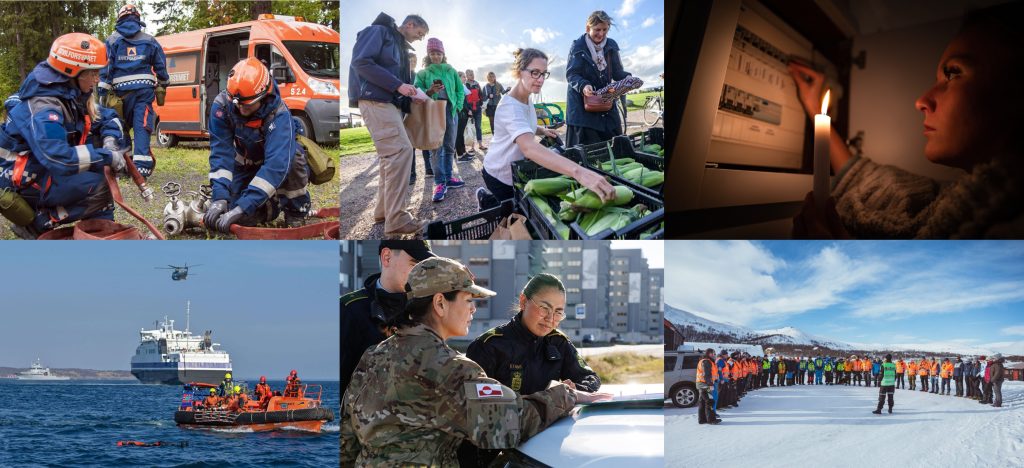As global challenges such as climate change, natural disasters, and geopolitical tensions intensify, preparedness and resilience have become central concerns for policymakers at all levels. Nordic regions face various risks, including severe weather events, disruptions to food and energy supplies, and cross-border emergencies. Ensuring robust civil preparedness is essential to maintain stability and operational capacity during crises.
A newly published storymap ‘Robust regional civil preparedness in the Nordic Region’ introduces a selection of good practices to showcase how Nordic regions address risks and challenges through locally adapted solutions.

The good practice examples have been collected as a part of Nordregio’s Robust Regional Preparedness project that examines the regional policy dimension of building civil preparedness and resilience. Elin Slätmo, Senior Research Fellow at Nordregio and project leader of Robust Regional Preparedness, explains: “In this assignment from the Nordic regional ministers, our team is looking into how regional policy in the Nordics addresses civil preparedness and crisis response. We are also working to identify cases and good examples from across the Nordic Region.“
Diverse initiatives across the Nordic Region
The storymap reflects a wide range of diverse approaches for strengthening civil preparedness at regional and local levels. In addition, the examples highlight the importance of cooperation between different actors to address shared risks and enhance joint preparedness.
Among the 24 featured good practices, you can discover for instance how:
- In Gladsaxe, Denmark, a course in civil preparedness helps local residents prepare for the unexpected and teach people how to act for instance if faced with extended water or electricity shortages.
- In Jämtland Härjedalen county, Sweden, Service and Security Points (SOTs) have been established as local hubs that serve the community in day-to-day life as well as in case of power outages, storms, forest fires or other crises.
- In Korsnäs, Finland, an old mine is being transformed into an energy storage facility. The initiative improves capacity to rely on green, renewable energy and contributes to local energy security.
- In Bodø, Norway, a large civil crisis management exercise brings students and professionals from agencies and local services together to test their crisis resilience in realistic drills based on different crisis scenarios.
- In East Iceland, a local crisis management awareness project informs local residents about weather-related crises, such as flooding or landslides and enhances the involvement of locals in place-based civil preparedness.
- Along the Nordic border regions, cross-border rescue services enhance cross-border collaboration in crisis management and ensure quick responses in crisis situations.
What is the role of regional policy and local and regional action in build robust societies?
Civil preparedness is an important part of managing risks ranging from natural disasters like storms and wildfires to disruptions in essential services such as food and energy. Local and regional authorities are often the first to respond and take action, implementing measures that safeguard communities and ensure the continuity of essential services. Their ability to implement flexible, context-specific solutions is indispensable for maintaining safety and stability, as well as ensuring rapid responses during crises.
The concrete examples featured in the storymap will feed into the next stages of the Robust Regional Preparedness project. “The good practice examples will be analysed alongside policy analyses and case studies in order to provide recommendations on how regional policy can further integrate civil preparedness and crisis response,” Slätmo outlines. The final recommendations will be published in a policy brief later this year.
Nordic tour of robust regional civil preparedness
The storymap serves as a resource for anyone interested in how Nordic regions are building resilient systems capable of withstanding risks and challenges. As Slätmo notes: “In a time of perpetual crises, we hope these examples can inspire and contribute to learnings on how to create robust and safe societies.”

Explore the good practices in the storymap, take a tour across the Nordics and see how local and regional actors are working together to enhance robust regional civil preparedness in the Nordic Region.




